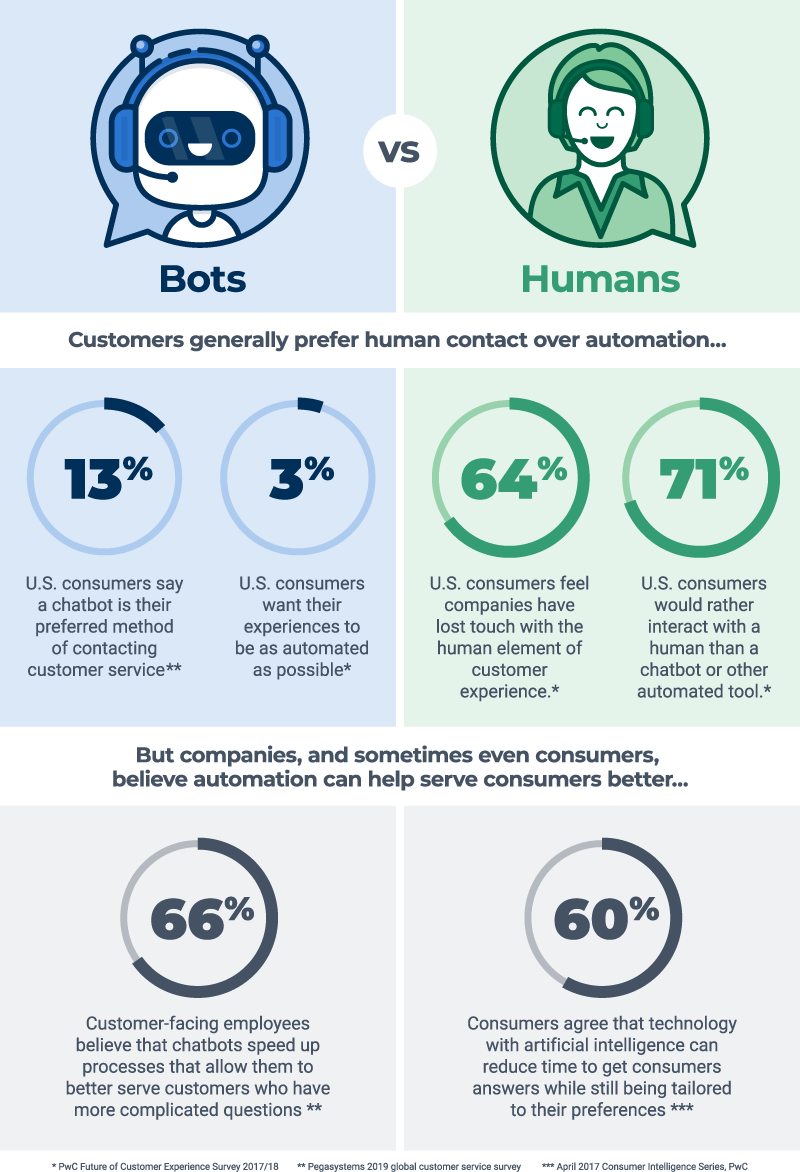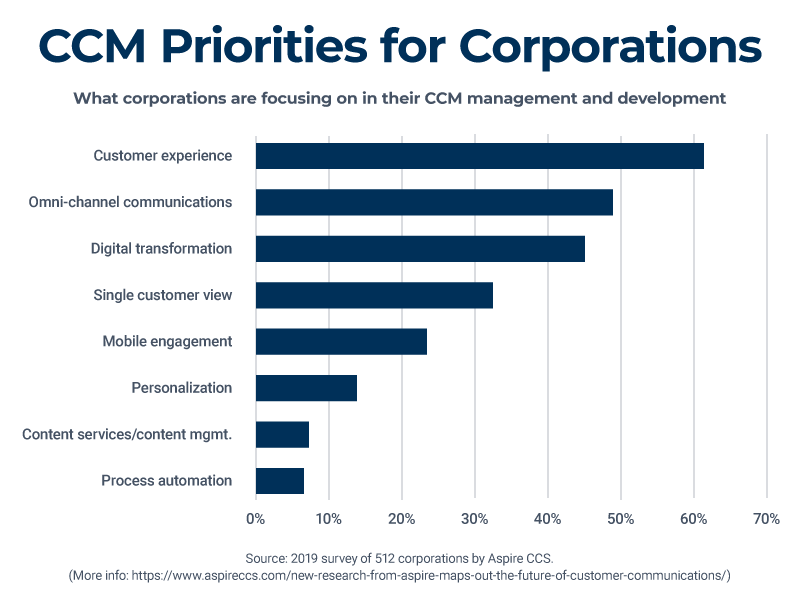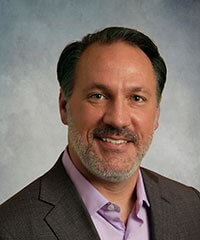What Is Customer Communication Management (CCM)?
Customer communication management (often referred to as CCM) is how organizations create, manage, and improve the methods they use to interact with customers. Here are some of the most common types of communication that a company needs to manage and coordinate:
- Correspondence and documentation relating to insurance claims
- Introductions of new products
- Marketing materials
- Notifications about bills and payments
Industry experts often consider CCM to be a part of customer experience management (aka CXM or CEM). CXM involves coordinating more broadly in order to improve all aspects of a customer’s experience with an organization.
Benefits of Effective Customer Communication Management
Organizations that develop effective CCM programs (frequently by purchasing or building customized software) reap a number of benefits:
- They save money when they communicate with customers.
- They improve the quality of their communication with customers.
- As a result, they make customers happier.
Additional benefits include the following:
- Integrated Communication from All Departments: Each department in an organization develops its own form of communication with the same set of customers. In some cases, that communication may require cross-departmental approval; in other cases, one department may communicate with a customer without the knowledge of other departments.
Good customer communication management ensures that you have one centralized effort to understand and coordinate all correspondence with any customer. - Increased Efficiency of Communication: Many organizations use thousands of documents to communicate with customers. Effective CCM plans or software can help you significantly reduce the number of documents you need to store and use.
Scott Draeger, Vice President of Customer Transformation for software provider Quadient, says CCM software can help organizations eliminate on average 75 percent of their stored communication content. - Increased Consistency of Communication: CCM can and should help your organization use consistent language across different types of communication. CCM can enable different departments to work with the same language templates.
- Less Customer Confusion and Frustration with Contradictory or Inconsistent Messaging: Customers often receive conflicting communication from different departments within an organization.
Draeger says communication regarding a global pandemic is the perfect example of a circumstance in which an organization’s different departments disseminate conflicting information. For instance, one department within an electric utility might send an email to customers indicating they don’t have to make payments for three months due to the economic shutdown caused by the pandemic. Then three days later, another department might send an automatic message informing customers that their electricity will be cut off because of a late payment.
“What does the customer do? The customer gets angry, of course,” says Draeger. The customer calls the utility, which costs the utility more money. The utility has now managed to waste resources while also making the customer unhappy, he says. - Improved Branding: CCM makes it possible to communicate more consistently, thus unifying branding and messaging.
- Improved Compliance with Regulations: Government regulations require specific standards for communicating with customers. The application of these standards is especially relevant in certain industries and circumstances. CCM ensures that an organization’s communication follows those standards.
- More Happy Customers: Consistent, cogent communication creates more happy customers. With more happy customers, companies increase client retention. It costs six to seven times more to attract a new customer than it does to keep a current one. (To learn more about the value of customer retention, visit this article.)
“At the end of the day, customers want to do business with companies they like and trust,” says John Zimmerer, Senior Director of Marketing for Topdown, a CCM provider. CCM “ends up improving the responsiveness and the relevance of a customer’s communication with a company. When that happens, the company can meet the customer’s needs or wants faster and more effectively,” Zimmerer says. “As the customer’s experience improves, they become more loyal.”
Customer Communication Management Software
Customer communication management software helps organizations coordinate, monitor, and automate communication with their customers. This software allows organizations to deliver:
- Consistent, coordinated communication through different channels
- Communication that is the same to many customers (batch), goes to particular customers for a specific reason (on-demand), and includes back-and-forth interactions with individual customers (interactive)
The CCM solutions include on-premises software or cloud-based software as a service (SaaS).
Learn more about specific CCM solutions with this chart, which includes information from Aspire, which produces an Aspire Leaderboard every year to compare and assess CCM software.
Types of Customer Communication
Experts often divide customer communication into three broad categories:
- Structured, or “Batch,” Documents: This is the kind of communication you regularly send to all or most of your customers. Structured/batch documents can include financial statements or bills. Your organization likely sends this type of document most often, and they rarely require changes.
- On-Demand Documents: A company creates this kind of document for a particular reason and sends it to specific customers. These documents might include proposals, special offers, or promotions.
- Interactive Documents: These documents are the back-and-forth communication that might occur between your organization and specific customers; this type of communication requires far more personalization. Interactive documents can include negotiated contracts or responses to claims or specific complaints.
The following list includes most of the reasons an organization might want to communicate with a customer or potential customer:
- Information about a customer’s account
- Information about new products or services
- Information in response to a customer concern or need
- Legal information that the company wants to (or must) communicate to a customer
Automated Customer Communication
Automated customer communication refers to messages (usually emails) that a company’s communication system sends automatically based on characteristics of a customer or a customer request. A primary goal with CCM is to use automated customer communication as often as possible.
Automated customer communication also includes website chatbots and virtual assistants that can answer questions by phone or text.
When sending automated messages, your organization’s system should be able to transmit personalized messages when necessary. Here are some examples of personalized automated customer communication:
- A promotional message that a customer receives shortly after their first purchase
- A promotional message (with or without incentives) that a customer receives when they have not ordered or purchased from your organization for a set period of time
- A promotional message that offers a customer a new discount after they have made several purchases over a set period of time
As mentioned, chatbots and virtual assistants can also be efficient and effective ways to help customers. However, your organization must proceed carefully when using these automated tools: Customers and clients want an easy way to quickly reach a customer service representative when they are not getting answers.
Still, there are real benefits to automated technology. It can improve your customer service by facilitating and accelerating the process of responding to client requests and questions.
Dylan Max is the Head of Growth Marketing at Netomi, an artificial intelligence (AI) customer service company that is focused on support automation using chatbots and conversational AI. Max cites a recent example of AI customer communication fulfilling an urgent need: A large U.S. airline that ordinarily receives approximately 80 customer service requests per hour experienced a massive surge in requests (i.e., 200 per second) at the beginning of a global pandemic. Thousands of flights were cancelled. “You can’t hire [enough] support agents” to serve that sort of demand, Max says.
In situations like the one described above, a chatbot or virtual assistant can often help resolve a customer issue. Moreover, these AI tools can eliminate the (often excruciatingly long) wait time from the customer service experience.
Pegasystems, a customer engagement software company, conducted a recent survey of more than 12,000 customer service employees, business leaders, and customers regarding customer service. The survey found that 26 percent of the business leaders plan to invest in chatbots over the next two years.
It also found that two-thirds of employees believe that chatbots could accelerate customer service processes, allowing employees to focus on customers who need human help. Sixty-two percent of the employees also said that chatbots simplify a customer service rep’s job, allowing for more satisfied employees and customers.
But experts caution that organizations must understand how to use such technology, so that it helps rather than hinders customer service. For example, companies might note the Pegasystems study found that only 13 percent of customers prefer chatbots over human customer service reps.
Large professional services consulting firm PwC conducted its own study on customer service and customer experience. The firm found that 71 percent of U.S. residents would rather interact with a human than a chatbot or any other automated aid. You can find more details on consumer attitudes about chatbots and other technology in this infographic.
The bottom line on AI-based customer communication technology: These aids can help speed certain processes, but make sure a human customer service rep is available when a client asks for one.
Most Common Customer Communication Channels
Customer communication occurs through a range of modes and channels. Generally, an organization uses more than one method to communicate with its customers. An organization’s customer communication management must take into account how specific customers prefer to receive their communication.
Here are the most common modes and channels of customer communication:
- Chatbots on a company’s website
- Live chats (with customer service reps) on a company’s website
- Mobile phone short message service (SMS) texts
- Phone
- Printed documents, most often sent through the regular mail
- Social media
- Web pages, including links to interactive documents and information
Alternative Methods of Customer Communication
In some cases, it can make sense to communicate with customers in other ways, especially when a customer prefers a particular channel. Alternatives include Skype, Zoom, or a similar technology. (Note: Clients in industries such as healthcare or academia may still use near-obsolete technology like fax machines. In such cases, you can use your own current communication technology — such as email to fax — to accommodate your customers.)
Common Problems in Customer Communication
Because poor-quality customer communication damages the company’s perception and the retention rate among customers, good customer communication management is crucial. Common problems in customer communication include piecemeal, redundant, outdated, disparate, and inefficient information. See below for in-depth descriptions of these terms:
- Piecemeal: This problem occurs when an organization’s various departments use different technologies or systems to communicate with customers. This failure to streamline often arises from the instinct to convey different kinds of information via different methods of communication. For example, a company might treat a bill differently than it treats marketing materials or communication that’s required by a government regulation.
- Redundant: Because different departments often use different methods of communication, customers may receive the same, or similar, messages multiple times.
- Outdated: Depending on needs that pertain to a department’s particular kind of work, some divisions (e.g., legal, marketing, customer service, etc.) in an organization might use outdated and inefficient systems.
- Disparate: Because different departments use different communication technologies and rarely coordinate with one another, customers can receive inconsistent or contradictory messages. With all these disparate systems in place, an organization is unable to engage in quick interactions with its customers.
“One of our customers — before CCM — was basically using a shared disk that held a bunch of Microsoft templates,” says Topdown’s Zimmerer. “As a result, a number of frontline employees each ended up developing their own cache of these templates, getting no oversight before sending them to customers. That kind of inconsistency ultimately fractured the brand’s voice and image.” - Inefficient: Those without a good CCM system suffer. According to research, for every $1 you spend producing a customer-facing document, you will spend $9 managing it.
CCM systems allow organizations to manage communication more efficiently, Zimmerer says. For example, similar content from two different departments can be used more effectively. “Why create more content than you absolutely have to?” he asks. “Why don’t you let it reside in one system and integrate the two together?”
Customer Communication Strategy
You should adopt an overall customer communication strategy and structure that encompasses all the communication channels your organization uses. The strategy should also include the ways in which the system can integrate all these channels.
“Philosophically, CCM combines people, process, and technology in order to facilitate the exchange of information between a customer and a company,” Zimmerer says. “Done well, it builds trust and strengthens the relationship between those two parties.”
An organization must determine its overall customer communication strategy before it can decide on the right CCM technology, says Will Morgan, Senior Research Analyst for Aspire, a consulting firm that helps clients navigate the transformation from customer communication management to customer experience management.
“Just buying the technology is not really going to get you there,” says Morgan. “You can’t spend your way to a customer communication strategy. The technology helps and the technology is necessary. But it’s not going to do everything. Breaking down departmental silos and remaining true to the vision of centralizing the control of communication require a strong commitment.”
Customer Communication Governance
A customer communication strategy is also important in terms of organizational governance. You must ensure that your organization complies with all industry regulations that govern customer communication. In addition, make sure you have proof of this compliance.
In many industries, a range of government regulations mandate certain customer communication. This mandate applies particularly to the healthcare, financial services, and insurance industries. In some cases, these regulations specify the actual content of this communication, as well as that of many other required procedures.
CCM software can help your organization comply with all of those regulations by offering the following capabilities:
- Creates a compliance trail for your organization, so you can provide proof that you’re properly following regulations
- Enables your staff to manage, track, and approve the required communication
- Ensures that you include the required content for certain communication channels and limit the ability to access and change content to authorized staff
- Helps your organization avoid significant fines for not following regulations relating to customer communication
- Helps your organization remain current on privacy and security requirements
- Helps your organization stay updated on the changing regulations and mandates that are specific to your industry
Customer Communication Best Practices
Experts recommend a number of best practices for communicating effectively with customers. These include using a range of communication channels, leveraging useful content, and being aware of previous interactions.
Here are details on best practices for customer communication:
- Use Omnichannel Delivery: This refers to a CCM system that allows an organization to communicate with each customer in a number of different and coordinated ways. Customers who expect to be able to communicate through numerous channels — email, text, phone, and more — have preferred ways of receiving and sending communication with an organization. All organizations must be able to use all of the communication channels that customers prefer.
- Be Efficient with Your Organization's Written Content: That means leveraging similar content that can be used in various communication for various purposes.
“The philosophy behind CCM is to do as much as possible with as little as possible,” Topdown’s Zimmerer says. - Create Clear, Readable, and Compelling Content: Content must be concise, clear, and easy to digest. Otherwise, no one will read it.
- Take into Account All Previous Communication with a Customer: A huge issue with most organizations is not tracking previous communication with a customer. One 2018 survey by Gladly, which offers an online customer service platform, found that 71 percent of consumers want the companies they do business with to remember their previous interactions, but only 29 percent say that happens regularly for them. (Eighty-seven percent of respondents also were frustrated that they have to repeat themselves several times to different customer service agents about the same issue.)
Your CCM system must track all communication in all channels with a customer. When a customer calls your customer service line, your separate email to her on a different issue a few days later may need to reflect that interaction.
Justin Butlion, a business analytics consultant and founder of ProjectBI, which provides information and advice on using business analytics and data, says your organization’s CCM system or software should, for instance, “give you a list of all of the (request for help or communication) tickets open under a certain email.”
Max, from Netomi, says your organization might send a message to certain customers offering an incentive when they recommend your company’s product or service to a colleague. “But you don’t want to send that to someone who just sent you a customer complaint,” Max says. - Understand and Be Relevant for Your Customers: Beyond tracking all previous communication with a customer, your organization also needs to personalize those messages. Your organization will still send some general customer communication. But many messages should be individualized for each customer — taking into account the customer’s order history and other interactions with your organization, along with their preferences.
“In order for it to work, you have to understand your customer,” says Brian Zotti, Senior Vice President of Services and Operations at Contek Consulting LLC, a business strategy consultancy. “You can’t just push a generic message out to everyone and play the volume game. They expect something to feel personal. They expect you to be Netflix in your anticipation power.”
Chris Huff, Chief Strategy Officer for Kofax, a process automation software provider that offers CCM solutions, says that when customers get personalized communication that recognizes their history with an organization, “they feel like this company has really gotten to know them. They say: ‘I’m not just a number. I’m someone.’” - Don’t Get Too Personal — It Can Be Intrusive: Still, some organizations’ attempts at “personalization” can veer into “creepy” territory. This is most obvious when an organization tracks a customer’s online activities on the organization’s website or elsewhere. Even more concerning for many customers, an organization might track a customer’s offline shopping through GPS devices.
The 2018 CX Trends Report by Inmoment, a customer experience management company, found that 75 percent of respondents consider most forms of personalization to be at least somewhat “creepy.” - Don’t Send Spam: Spam, of course, is a huge turnoff for customers and potential customers. The fix to that is to provide information that is most relevant for a specific customer.
- Let Your Customers Decide: Ask customers what communication they want to receive from your organization and through which channels. Then heed those preferences.
- Give Equal Attention to Every Customer: A CCM system should allow your organization to monitor its interactions with each customer and respond accordingly.
- Don’t Forget That Security Is Vital: Your CCM systems or software that allow for outbound communication must be digitally secure. This is important for all organizations, but especially for those in industries — financial services and healthcare, among others — where regulations dictate specific levels of security.
Elements of Customer Communication Technology
A customer communication management system includes a wide-ranging set of technology. In general, it allows the system to understand all communication and ensure the information is distributed to customers appropriately. That technology includes:
- Data Extraction and Transform and Load Software: This copies data from one digital source to another to use in mailing, for instance.
- Data Management, Analysis, and Location Intelligence Software: This helps your organization understand geospatial data and relationships.
- Data Hygiene Database Software: This “cleans” data, including correcting errors and removing corrupt records.
- Document Composition Software: This creates documents you send to customers.
- Electronic Document Archive Software: This helps organizations store and easily retrieve all electronic documents.
- Payment Processing Functionality: This helps organizations accurately process payments.
- Print Stream Engineering/Post-Processing Software: This manipulates data in documents for efficient printing and distribution.
- Mailing Compliance Database Software: Use this to track mailing information to ensure compliance with regulations.
- Printer Management Software: This technology manages printer functions.
- High- and Medium-Volume Production Printers: This enables you to print a large number of documents.
- Envelope Inserter Machines: This inserts documents in envelopes.
- Email Marketing Software: Use this to create and coordinate email marketing.
- SMS Communication Software: Use this to create and coordinate marketing through texts or SMS communication.
- Mobile-Media-Based Content Distribution Software: This coordinates communication sent through mobile media.
- Social Media Distribution Software: This allows organizations to use one tool to track, coordinate, and distribute communication from various social media channels.
- Document Production Reporting Software: This tracks production and distribution of documents.
- Portal Technology: This allows for a more user-friendly interface to access and use underlying complicated technology and systems.
- Transpromotional Application Software: This allows organizations to coordinate and distribute communication materials in unrelated distributions (promotional material in regular statements and bills, for instance).
The Difference Between Customer Communication Management and Customer Relationship Management
Customer communication management and customer relationship management are related but distinct. CRM involves all the ways that an organization tries to monitor and improve its relationship with customers and prospective customers. CRM software helps organizations coordinate those relationships.
CCM is sometimes seen as a part of CRM. CCM focuses on the communication between customers, prospective customers, and the organization. CCM software helps organizations coordinate and monitor that communication.
To learn more about customer relationship management, check out the customer relationship management article that’s part of this series. You can learn more about best practices and expert advice on how to set up a system to effectively manage clients and maintain good relationships from out article "Tips and Best Practices for Mastering Client Management".
Benefits of CCM Software
Customer communication software can help ensure your organization’s customer communication is effective and efficient. Good CCM software can help with the following:
- Effectively executing consistent and clear messaging campaigns across various communication channels
- Automatically creating and delivering well-designed and personalized communication
- Reducing the number of siloed teams in different organizational departments
- Making consistent, automated changes in messaging as needed
- Using a wide range of customer data to respond to and better market goods and services to customers
- Increasing overall visibility and control over all of your customer communication
- Reducing reliance on information technology experts to make minor changes in communication to a large group of customers
- Focusing on the individualized needs of specific customers through tailored and meaningful communication
- Tracking and understanding which specific communication work and why — with the ultimate goal of improving customer engagement and revenue
“Communication is both an art and a science. It’s very hard to tease the two apart,” says Max, from Netomi. But “recording the data related to your communication moves the needle toward the science aspect. Why is science important? Science is repeatable and art is much harder to repeat.”
Tracking communication with specific customers helps companies learn from failures, Max says. For instance: “‘We sent this person too much communication.’ You need that data to not make the same mistakes and replicate successes. Over time, that will have an exponential effect on your business.”
Customer Communication Capabilities
Most CCM software has common helpful components. For instance, it allows for consistent communication across different channels, as well as “batch” and individualized communication. You may look for other components based on your organization’s needs.
Seek out these common components in CCM software to do the following:
- Fuss-Free Deployment and Maintenance: When the software is too complicated, nobody uses it.
- Simple, Attractive, and Intuitive User Interface: Zimmerer from Topdown notes that your organization’s employees “spend a lot of time in front of their screens, interacting with these environments.” He says, “The goal is to minimize the effort required, as well as the drudgery of this work. Having a high-quality user interface really does impact the employee experience, which, in turn, enhances productivity.”
- Easy Integration with Your Software and Data Systems: This includes customer information, such as apps for enterprise resource planning, customer relationship management, and other applications. Your CCM system and software should be able to easily fetch data from your other systems, then easily create statements and documents.
“Integrate with as many systems of record and systems of engagement as you possibly can,” says Zimmerer. “The more you can integrate, the better the ROI on this expense. That also ends up improving the customer experience. There is more timely, relevant communication, all achieved through integration.”
To learn more about enterprise resource planning, visit “Transform Your Business with Enterprise Resources Planning.” - Easily Track and Maintain Regulatory Compliance: Regulations governing some industries mandate companies send out specific communication and even the content in that communication. CCM software should automatically track all regulations and appropriately adjust content.
- Be Scalable and Adaptable for Future Trends: Customer communication continually evolves, as does the technology to make it happen. CCM software should have the basic structure to evolve easily with future changes, without the need for purchase of expensive new software.
“The CCM product has to have enough functionality to not only do what you need to do today, but to provide you room to grow,” says Zimmerer.
Trends in Customer Communication Management Software
A few trends are significantly changing how CCM software works and will likely change how organizations use CCM in the future. Two of the most prominent trends are the following:
- Increasingly Cloud-Based: Most CCM software has been on-premises only, but some solutions have evolved into a hybrid of on-premises and cloud-based configurations. Zimmerer estimates that 80 percent of organizations still use on-premises software, but the percentage that uses cloud-based has grown significantly in the past few years — and the trend will accelerate.
“The pace of change has hit warp speed,” he says. “My guesstimate — from an industry perspective — is that in three years, we’re going to hit the 50 percent mark (for cloud-based solutions). And in five years, we’ll hit the 80 percent mark.” - Expanded Artificial Intelligence Capabilities: Max from Netomi says many businesses have been overwhelmed by customers trying to communicate with them in all channels during the global pandemic. Some are already using AI as an aid, and many more systems will use it in the coming years.
“AI is paving the way for companies to expand their business with slightly fewer growing pains than they would normally have,” he says.
History of Customer Communication Management
Customer communication software was developed in the late 1980s. Organizations initially used CCM primarily for transactional mailings — documents like bank statements, account statements, invoices, and bills that the company sent through the postal service.
Since companies found that about 90 percent of their customers opened this kind of mail, organizations began using CCM to include other communication in those same envelopes to promote their products and services to customers.
Turbocharge Your Customer Communication Management with Smartsheet
Empower your people to go above and beyond with a flexible platform designed to match the needs of your team — and adapt as those needs change.
The Smartsheet platform makes it easy to plan, capture, manage, and report on work from anywhere, helping your team be more effective and get more done. Report on key metrics and get real-time visibility into work as it happens with roll-up reports, dashboards, and automated workflows built to keep your team connected and informed.
When teams have clarity into the work getting done, there’s no telling how much more they can accomplish in the same amount of time. Try Smartsheet for free, today.









